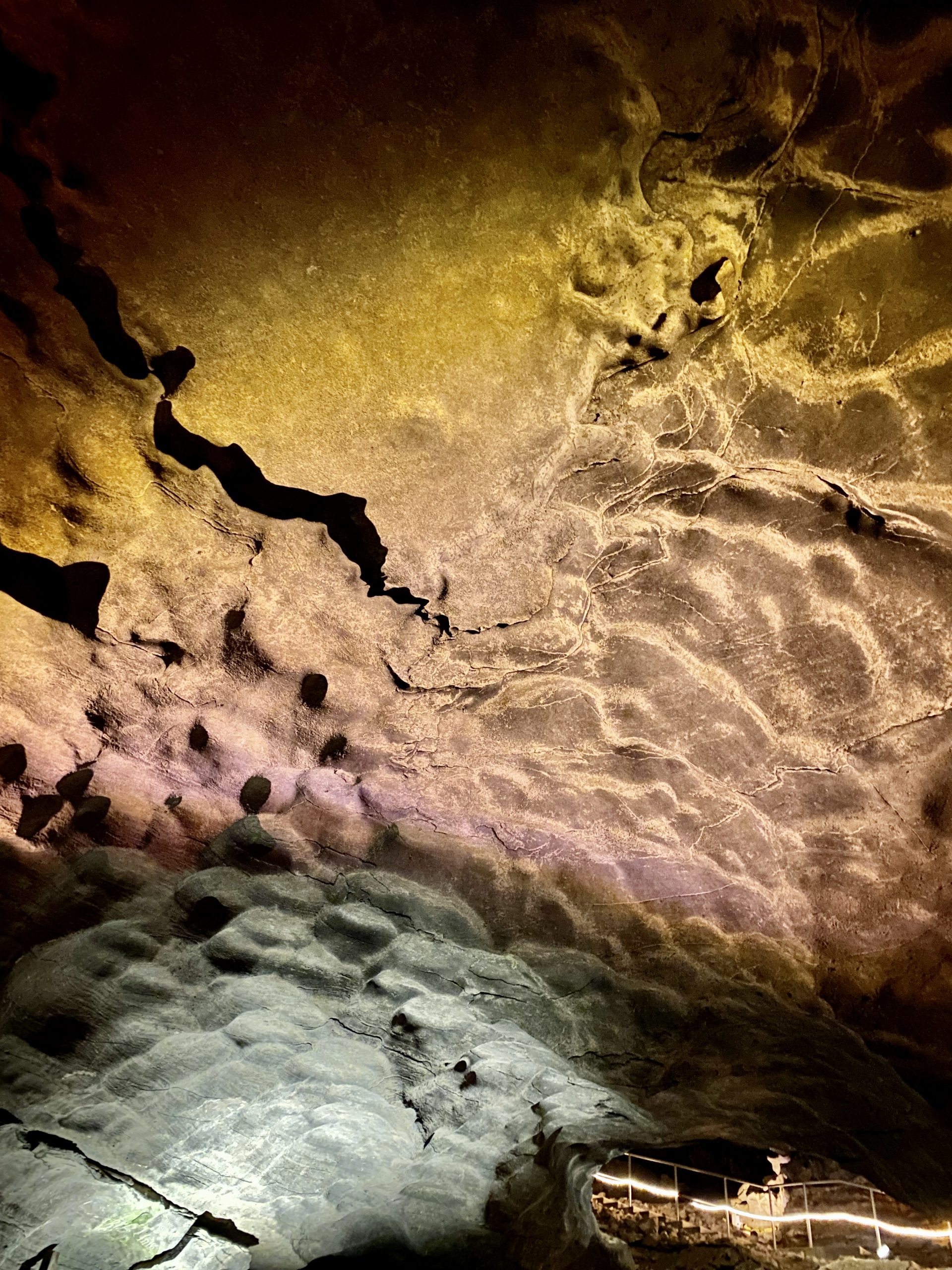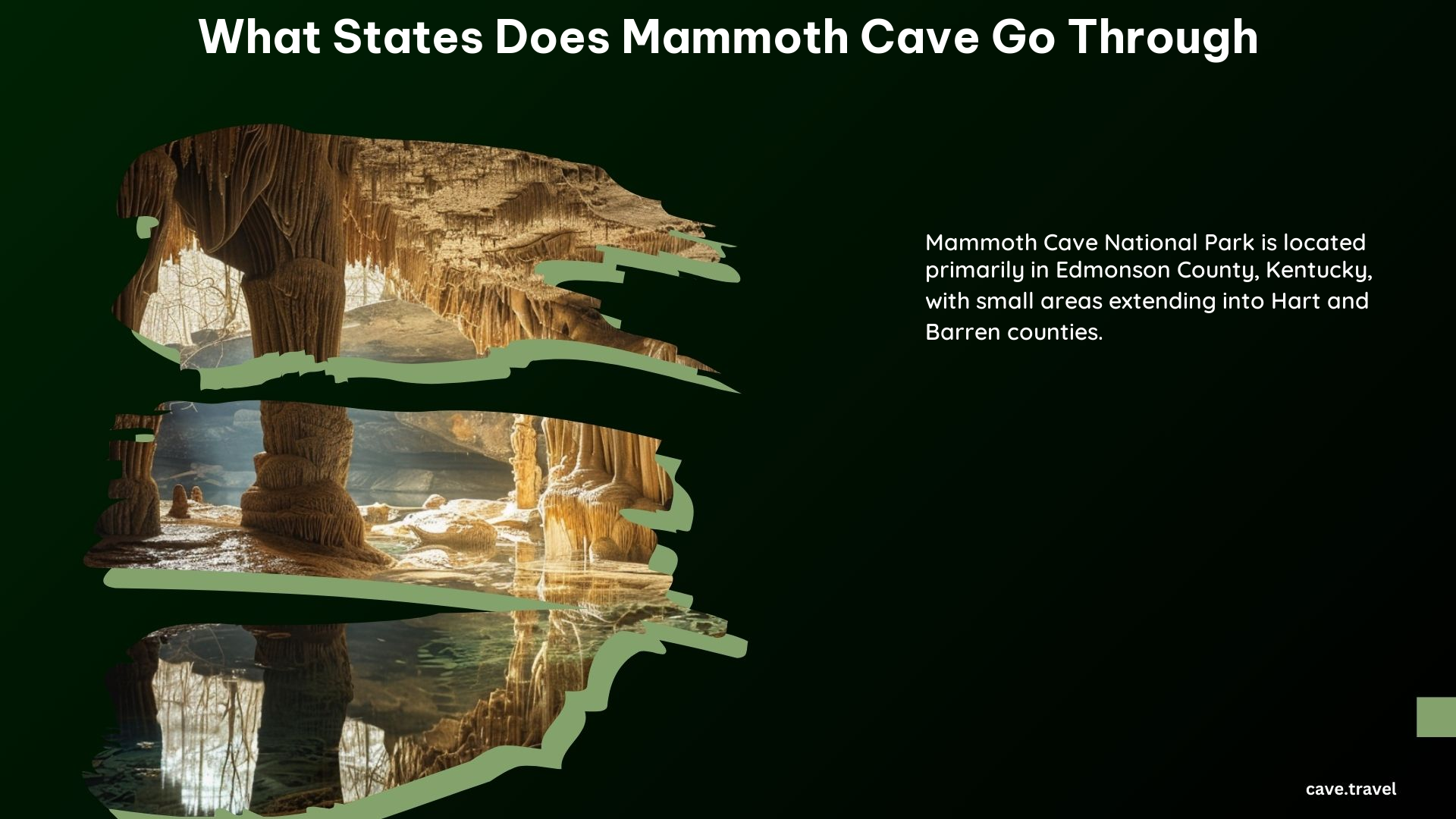Mammoth Cave National Park is a renowned natural wonder located primarily in the state of Kentucky. Spanning across three counties – Edmonson, Hart, and Barren – this vast underground cave system is one of the most captivating destinations for cavern touring enthusiasts. Contrary to popular belief, the Mammoth Cave does not extend into any neighboring states, making it a unique geological marvel confined within the borders of the Bluegrass State.
The Geographical Extent of Mammoth Cave

Mammoth Cave National Park is situated in south-central Kentucky, approximately 85 miles south of Louisville. The park’s boundaries encompass a significant portion of the Mammoth Cave system, which is the longest known cave system in the world, with over 400 miles of explored passages.
The cave system is primarily located within the following three counties in Kentucky:
- Edmonson County
- Hart County
- Barren County
While the majority of the Mammoth Cave system is contained within these three counties, there are a few smaller sections that extend into adjacent areas. However, the vast majority of the cave’s explored passages and tourist attractions are located within the boundaries of Mammoth Cave National Park, which is entirely contained within the state of Kentucky.
Unique Features of Mammoth Cave

Mammoth Cave is renowned for its vast network of underground passages, diverse geological formations, and unique ecosystems. Some of the most notable features of this natural wonder include:
-
Sheer Size: Mammoth Cave is the longest known cave system in the world, with over 400 miles of explored passages. The true extent of the cave system is still being discovered, and it is believed that there are many more miles of unexplored passages.
-
Geological Diversity: The cave system features a wide variety of geological formations, including stalactites, stalagmites, flowstones, and underground rivers. The diverse rock formations and mineral deposits create a visually stunning and ever-changing landscape.
-
Unique Ecosystems: Mammoth Cave is home to a diverse array of cave-dwelling organisms, including the endangered Kentucky cave shrimp, the cave cricket, and the cave salamander. These species have adapted to the unique environmental conditions found deep within the cave system.
-
Cultural Significance: Mammoth Cave has a rich cultural history, with evidence of human habitation dating back thousands of years. The cave has been used for a variety of purposes, including as a source of saltpeter for gunpowder production during the War of 1812.
Exploring Mammoth Cave
Mammoth Cave National Park offers a variety of tour options for visitors to explore the cave system. These tours range from easy, family-friendly walks to more challenging, strenuous hikes that delve deeper into the cave’s interior. Some of the most popular tour options include:
-
Mammoth Cave Scenic Tour: This tour takes visitors through the cave’s most famous and accessible passages, including the Grand Avenue and the Rotunda.
-
Domes and Dripstones Tour: This tour focuses on the cave’s impressive geological formations, including towering domes and delicate dripstones.
-
Historic Tour: This tour explores the cave’s rich cultural history, including its use as a source of saltpeter during the War of 1812.
-
Wild Cave Tour: For the more adventurous, the Wild Cave Tour takes visitors deep into the cave’s unexplored passages, requiring participants to crawl, climb, and navigate through tight spaces.
Regardless of the tour option chosen, visitors to Mammoth Cave National Park are sure to be awestruck by the sheer scale and beauty of this natural wonder.
Protecting Mammoth Cave
Mammoth Cave National Park is a protected area, and the National Park Service is responsible for the management and preservation of the cave system. The park’s staff works tirelessly to ensure that the cave’s delicate ecosystems and geological formations are protected for future generations to enjoy.
One of the key challenges in protecting Mammoth Cave is the threat of human-caused damage. Visitors are required to follow strict guidelines and regulations while exploring the cave, including not touching or disturbing the cave’s formations. Additionally, the park’s staff closely monitors the cave’s water quality and air quality to ensure that the cave’s unique environment is not compromised.
Another important aspect of protecting Mammoth Cave is the ongoing scientific research and exploration of the cave system. Park scientists and researchers work to better understand the cave’s geology, hydrology, and ecology, which informs the park’s management and conservation efforts.
Conclusion
Mammoth Cave National Park is a true natural wonder, and its vast underground cave system is a testament to the incredible power of geological processes. While the cave system is primarily located within the state of Kentucky, its significance extends far beyond the borders of the Bluegrass State, making it a must-visit destination for cavern touring enthusiasts from around the world.
Reference:
– Mammoth Cave National Park
– Mammoth Cave: The Longest Cave System in the World
– Exploring Mammoth Cave National Park
